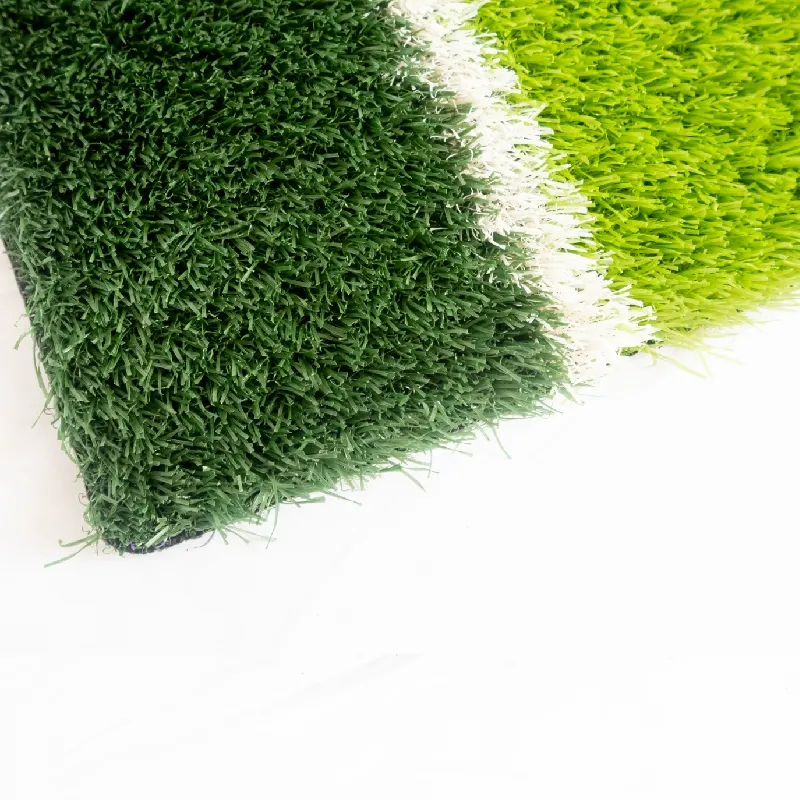
- Afrikaans
- Arabic
- Belarusian
- Bengali
- Czech
- Danish
- Dutch
- English
- Esperanto
- Estonian
- Finnish
- French
- German
- Greek
- Hindi
- Hungarian
- Icelandic
- Indonesian
- irish
- Italian
- Japanese
- kazakh
- Rwandese
- Korean
- Kyrgyz
- Lao
- Latin
- Latvian
- Malay
- Mongolian
- Myanmar
- Norwegian
- Persian
- Polish
- Portuguese
- Romanian
- Russian
- Serbian
- Spanish
- Swedish
- Tagalog
- Tajik
- Thai
- Turkish
- Turkmen
- Ukrainian
- Urdu
- Uighur
- Uzbek
- Vietnamese
artificial grass for sports
Dec . 12, 2024 10:35 Back to list
The Rise of Artificial Grass for Sports A Game Changer
In recent years, artificial grass has made significant strides in the sports industry, becoming an essential component of modern athletic facilities. As sports organizations, schools, and recreational centers look for durable and low-maintenance solutions, the adoption of synthetic turf has grown exponentially. This article explores the benefits, applications, and future of artificial grass in sports.
Benefits of Artificial Grass
One of the primary advantages of artificial grass is its durability. Unlike natural grass, which can be worn down by heavy foot traffic and adverse weather conditions, synthetic turf is designed to withstand rigorous use. It maintains its integrity throughout the seasons, making it an ideal choice for high-usage areas such as football and soccer fields. Moreover, artificial grass does not require the same level of maintenance as natural grass, which includes mowing, fertilizing, and watering. This reduction in maintenance not only saves time but also significantly decreases costs for sports organizations.
Another key benefit is the consistent playing surface that artificial grass provides. Natural fields can experience uneven patches, muddy areas, and variable grass lengths, which can affect the quality of play. In contrast, synthetic turf offers a uniform playing surface, resulting in a predictable athletic experience. This consistency is vital for performance, as athletes can rely on the same footing and ball behavior, reducing the likelihood of injury caused by uneven terrain.
Applications in Various Sports
Artificial grass has found a home in a diverse range of sports. In soccer, for example, many professional leagues and colleges have transitioned to synthetic turf to accommodate their training and competitive needs. Similarly, baseball fields frequently utilize artificial grass due to its ability to mimic the feel of natural grass while providing enhanced durability. Additionally, sports like field hockey and lacrosse have embraced artificial surfaces, which allow for a smooth playing experience and can be used in all weather conditions.
artificial grass for sports

One area witnessing significant growth is the construction of artificial grass multi-sport facilities. These versatile venues can host a variety of athletic activities, including football, rugby, and even track and field events. Such facilities maximize space utilization and ensure that communities can make the most of their athletic resources.
Environmental Considerations
While the benefits of artificial grass are commendable, it is essential to consider its environmental impact. Initial concerns about sustainability arose from the production and disposal of synthetic turf materials, which are often derived from non-renewable resources. However, advancements in technology have led to the development of eco-friendly alternatives. Several manufacturers now offer products made from recycled materials and are committed to creating more sustainable options. Furthermore, the absence of water, fertilizers, and pesticides in maintaining artificial grass contributes positively to environmental conservation.
The Future of Artificial Grass in Sports
As technology continues to evolve, the future of artificial grass in sports looks bright. Innovations such as improved drainage systems, UV resistance, and advances in fiber technology promise to enhance the quality and longevity of synthetic turf. Additionally, smart turf systems—equipped with sensors to monitor performance metrics—are on the horizon, allowing for data-driven insights into athlete performance and surface condition.
In conclusion, artificial grass is reshaping the landscape of sports facilities across the globe. Its durability, consistency, and low maintenance requirements make it an attractive alternative to natural grass. As the sports industry embraces sustainability and innovation, the role of synthetic turf will undoubtedly grow, paving the way for a new era of athletic excellence. The game is changing, and artificial grass is at the forefront of this transformation.
-
The Benefits of Artificial Turf for Indoors
NewsJul.15,2025
-
How Artificial Grass Suppliers Ensure Quality Products
NewsJul.15,2025
-
Artificial Grass and Pets: A Space for Relaxation
NewsJul.08,2025
-
Balcony & Outdoor Decoration with Artificial Grass
NewsJul.08,2025
-
Best Indoor Artificial Grass for Home
NewsJul.07,2025
-
Best Pet Turf for Dogs: Safe & Durable Artificial Grass Options
NewsJul.07,2025
Products categories









